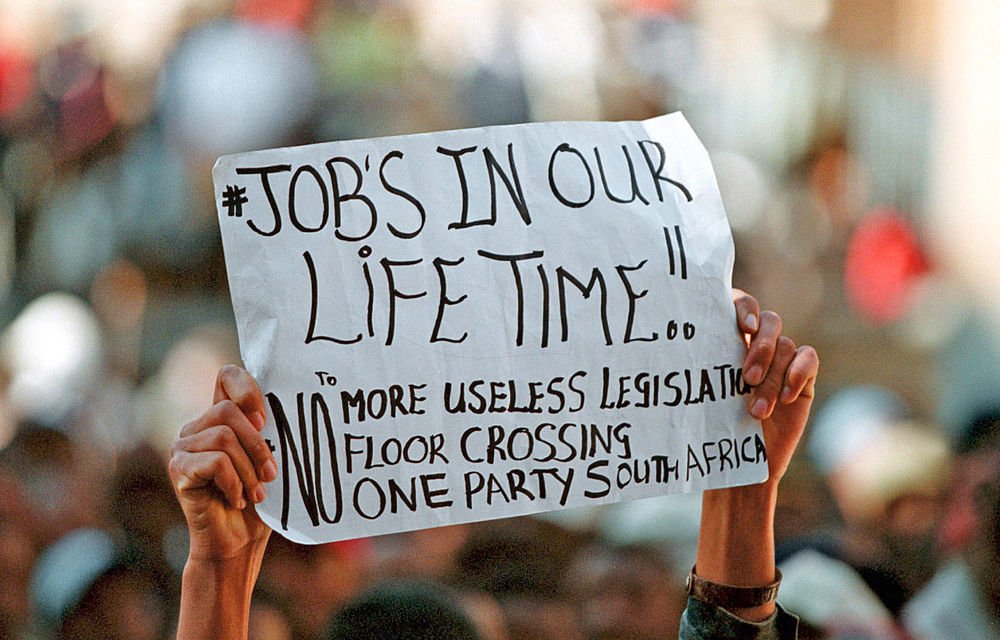
Statistics South Africa has released the latest second quarter employment statistics today, indicating employment has decreased by 80 000 jobs or by 0,8% quarter-on-quarter. The country’s jobs barometer moved from 10 589 000 jobs as of end of March 2025 to 10 509 000 in June 2025.
Decreases in jobs were experienced across multiple sectors, with community services shedding 53 000 jobs or -1,9%. The trade sector lost 10 000 or -0,4%, followed by manufacturing dropping 9 000 jobs or -0,7%, and construction jobs falling by 7 000 or -1,2% of total jobs in the sector.
There were small increases in the following industries: mining had a 2 000 or 0,4% growth while electricity saw a 1 000 or 1,6% increase. Total employment however decreased by a devastating 229 000 jobs or by – 2,1% year-on-year between June 2024 and June 2025.
Job Losses While Turnover Spikes
Ironically, the latest quarterly turnover statistics indicates that the total turnover of quarterly financial statistics (QFS) industries in the second quarter of 2025 was estimated at R3,64 trillion, an increase of 5,1% compared with the first quarter of 2025 with a total of R3,46 trillion.
This may seem counterintuitive, however when one looks at where turnover has increased it starts painting a worrying picture where state owned enterprises in South Africa are driving up profits at the expense of jobs and economic development.
Between the first and second quarters of 2025, turnover increased in all eight industries covered by the survey. However the largest percentage increase in turnover by some margin, was seen in the electricity, gas and water supply industries – all controlled by the state, that saw a massive +44,3% growth followed by the far-off second place industry of mining and quarrying which saw a +10,2% growth. Other industries saw growth of turnover. Considering the abnormally high prices of gold and platinum prices over this period, and considering that the mining industry only saw a quarter of the revenue increase that the electricity and water supply sectors saw, puts this lopsided approach to the economy into perspective.
Eskom Profit Underscores Rate Hikes in Electricity Services
Eskom has today also released its financial statements for the last financial year ending the end of March 2025, boasting a R16 billion profit line, and a turn around from a R55 Billion deficit the year before. Electricity prices have increased by double digit figures over the last few years with a 12,7% increase in April 2024 and additional electricity rate hikes by individual municipalities as well as additional levies for pre-paid meters among others.
While the improvement to the bottom line for Eskom is a welcome change after years of having bail-out payments from treasury, one has to now consider that additional increases in electricity rates is likely to simply hurt the economy and job creation further. A typical 800 kWh monthly household usage cost around R1,055 in 2014 but over the last decade has increased by a staggering 179% to R2,948 in 2024/25.
Single-mindedly chasing large profit at state owned electricity and water supply companies is not the strategy that will allow a reversal of one of South Africa’s biggest challenges – economic growth and job creation. While most South Africans will welcome the recent end to load-shedding, it has a larger challenge to face – Job-shedding.
Writing on the Wall
According to today’s unemployment numbers, even part-time employment decreased by 3,2% quarter-on-quarter, from 1 132 000 in March 2025 to 1 096 000 in June 2025. Part-time employment decreased by a significant 174 000 or 13,7% year-on-year between June 2024 and June 2025.
Gross earnings in the country increased by a marginal 0,2% from R984,7 billion in March 2025 to R986,8 billion in June 2025, while the year-on-year gross earnings increased by R32,8 billion or 3,4% between June 2024 and June 2025, close to the current inflation rate, leaving no impact on the overall economy.
While there are some positive indicators such as the total capital expenditure on new assets increasing by 8,4% between the second quarter of 2024 and the second quarter of 2025, this has not translated into a growing economy, nor into the number of people employed.
With the current official unemployment rate in South Africa, as reported by Statistics South Africa for Q2 2025 (April–June), standing at 33.2%, the second highest in Africa, there is an urgent need for the country’s administration to start paying more than just lip service to job creation.
Heading for a Meltdown
Failure by the current administration to effect policy that supports and encourages economic growth, they have doggedly pursued a policy path that has increasingly made it more difficult for businesses to do business in the country, leading to many moving their investment focus elsewhere in the global village.
In 1995 unemployment in South Africa stood at only 16,5% and 30-years later, the country is facing massive challenges in not only creating jobs but in getting any economic growth at all. The current GDP growth rate of less than 1% is an indictment on the administration and there is growing unhappiness on the ground in the manner that resources and tax moneys have been wasted.
There needs to be radical change in the administration or there is likely to be greater unrest and social meltdown in Africa’s largest economy.

